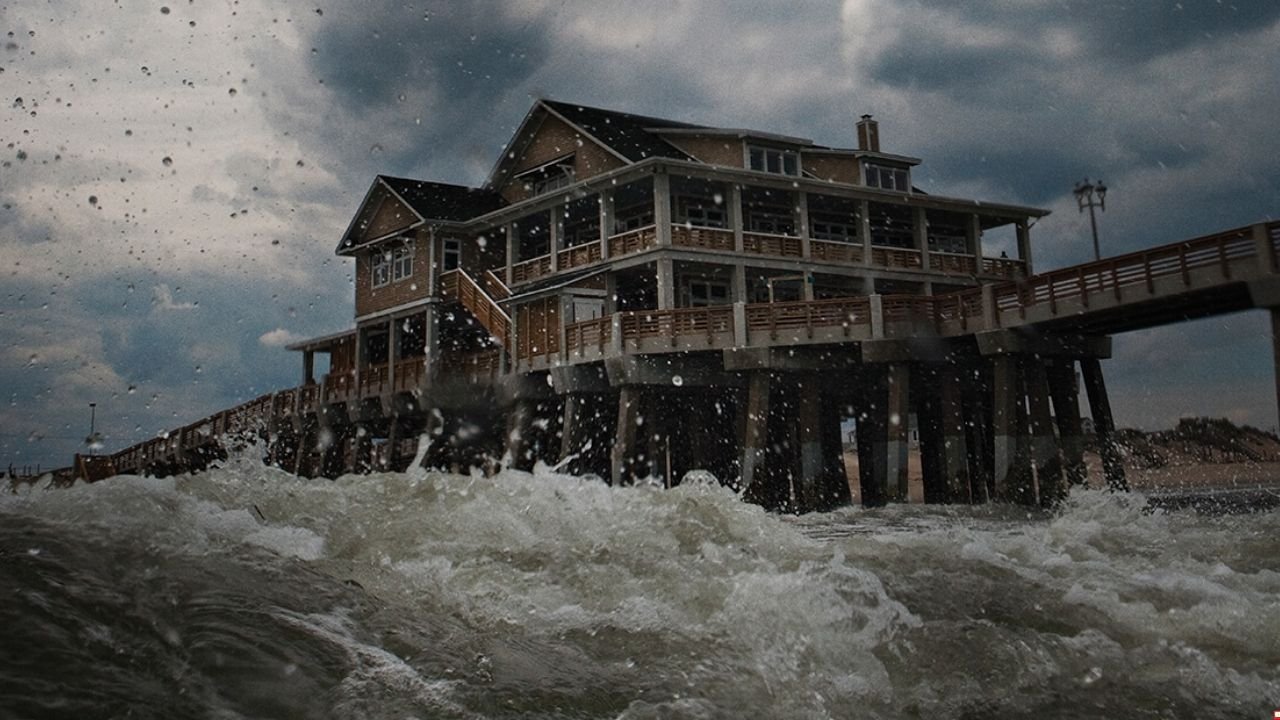Eastern North Carolina Native Reflects on Decades of Hurricanes and Hard Lessons Learned
EASTERN NORTH CAROLINA — “As an Eastern North Carolina native, I’ve seen some hurricanes,” wrote columnist Owen Hassell in a recent reflection on the state’s storm history. His words capture the reality that for coastal residents, hurricanes are more than fleeting weather events — they are milestones that define generations, test communities, and force adaptation.
Hurricane Hazel (1954): A Storm That Changed the Coast
In October 1954, Hurricane Hazel slammed into Calabash, North Carolina, as a Category 4 storm. Winds exceeded 100 mph, ripping apart communities from the South Carolina line through Cape Fear. Nearly every pier along the Grand Strand was destroyed, and 80% of beachfront dwellings in nearby Myrtle Beach were leveled.
Hazel killed 19 people in North Carolina and left thousands homeless, setting a precedent for just how destructive Atlantic hurricanes could be . Many older residents still describe Hazel as the storm that first made them fear the water.
Hurricane Ione (1955): Floodwaters Take Over
Just one year later, Hurricane Ione arrived with devastating rainfall. Though downgraded to a Category 2 storm at landfall, its storm surge reached five feet above normal, submerging farmland and small towns across Hyde and Carteret counties.
“The storm was destructive not just for its winds but for what came after — days of standing water,” noted state historians reviewing the storm’s impact .
Seven people died, and the agricultural losses devastated local economies still reeling from Hazel.
Hurricane Isabel (2003): The Day the Coast Split
Fast forward to 2003, when Hurricane Isabel carved a permanent scar into the Outer Banks. At landfall, Isabel was a Category 2 hurricane, but its storm surge tore a 2,000-foot-wide inlet through Hatteras Island.
The newly formed “Isabel Inlet” cut off road access for weeks, displacing families and disrupting tourism and commerce. It became a sobering reminder of how quickly the geography of Eastern NC can change .
Hurricane Florence (2018): When Floods Rewrote the Story
In September 2018, Hurricane Florence made landfall near Wrightsville Beach. Though downgraded to Category 1 winds, Florence lingered, dumping 30–35 inches of rain in parts of the state. Rivers overflowed, towns like New Bern were inundated, and thousands of homes were damaged beyond repair.
Florence caused at least 42 deaths in North Carolina, many due to flooding rather than wind.
“It showed us that storms don’t have to be strong on paper to be devastating in reality,” Hassell reflected in his column .
A Legacy of Resilience and Preparation
Across decades, Eastern NC has endured storms that reshape both the land and the people who call it home. From Hazel’s wreckage to Florence’s floods, common threads emerge:
- Storm surge and inland flooding remain just as dangerous as high winds.
- Communities adapt — whether it’s stronger building codes, improved evacuation plans, or federal disaster relief.
- Memories guide preparation — locals who lived through Hazel or Floyd often lead the charge to take new warnings seriously.
Experts emphasize that while forecasting has improved, storms remain unpredictable. As David Glenn of the National Weather Service noted in a recent hurricane preparedness briefing, “It only takes one storm hitting your community to make it a bad year.”
The Personal Side of Hurricanes
For Eastern NC natives like Hassell, these storms are not abstract events tracked on radar — they are lived experiences. Families recall gathering in candlelit kitchens, listening to battery-powered radios as winds howled. Neighbors remember digging each other out of flooded homes and sharing meals when power was out for weeks.
That collective memory has shaped the region’s identity. It’s why hurricane season brings not just forecasts but also community-level reminders: stockpile supplies, check evacuation routes, and look out for elderly neighbors.
Looking Ahead
Climate scientists warn that storms in the Atlantic basin are becoming wetter and slower-moving, raising the likelihood of Florence-like flooding events. For coastal North Carolina, that means more attention must be paid to infrastructure, zoning, and emergency planning.
Still, if history offers any lesson, it’s that Eastern North Carolina will endure. Each hurricane may bring destruction, but it also brings resilience — a spirit captured by the very people who’ve weathered the worst.
Have you lived through a major hurricane in Eastern North Carolina? What did you learn from it, and how did your community recover? Share your story with us at SaludaStandard-Sentinel.com.







